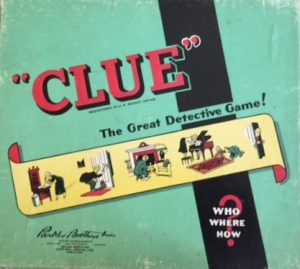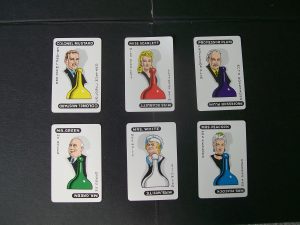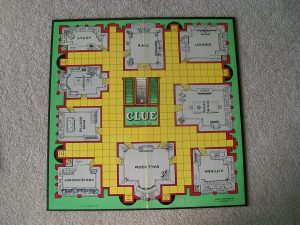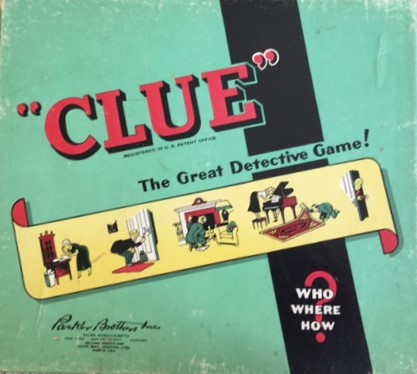
Sometimes you can’t beat the classics. And the board game of Clue is one of those timeless classics which will always make for a great night of family fun.
Clue was first published in England (under the name of Cluedo), and in the United States in 1949. It quickly captured the hearts of players with its challenge to solve a mystery. The mystery of course being ‘Who killed Mr. Boddy?’ (Mr. Black in Cluedo).
The game of Clue also had you answer two other questions correctly in order to win the game. Those Questions were:
*How did this mystery killer kill Mr. Boddy? With what weapon?
*Where did this mystery killer kill Mr. Boddy? In what room?
Moving across the board that roughly depicts a layout of a ‘house’, players would strive to be the first to answer all three of these Questions in order to win the game!
A final accusation might be, “It was Colonel Mustard, with the Lead Pipe, in the Library, who killed Mr. Boddy!”
The method of game play is not only a matter of deduction, but also keen detective skills!
There are 6 different characters of the game who could have killed Mr. Boddy. The suspects are:
Colonel Mustard (yellow game piece), Miss Scarlet (red), Professor Plum (purple), Mr. Green (green), Mrs. White (white), and Mrs. Peacock (blue).

These suspects could have used 6 different weapons to kill Mr. Boddy. The weapons are:
Revolver, Rope, Wrench, Knife, Candlestick, and the Lead Pipe.

And the suspect could have been in one of 9 different rooms of the house when he killed Mr. Boddy. The rooms are:
Library, Study, Kitchen, Dining Room, Ball Room, Conservatory, Billiard Room, Hall, and Lounge.

The game includes clue cards for each of the above options. Each category of cards (who, what, where) are shuffled separately. ONE clue card from each category is chosen and then secretly placed inside a ‘Black Envelope’. This slip case is placed in the center of the board.
The cards within this Black Case correctly identify the murderer, weapon, and room. It is this answer ‘detectives’ must deduce!
They do so by shuffling ALL remaining clue cards together and discreetly dealing these out to players, one by one.
Each player takes a detective notepad and pencil, and chooses a game piece (one of the colored pawns/characters/suspects).
By moving throughout the rooms, and making ‘suggestions’, players can conclude which of the 3 cards are hidden in the ‘Black Envelope’. Deduction is possible by suggestions being proven false (or true) by the cards in your own hand and/or by the cards in other players hands.
When a player moves into a room, by the roll of a die, he has the option of making a ‘suggestion’. He can suggest, ‘I believe it was Mr. Green, with the Candlestick, in the Ball Room.’ If the player to the left of the person making the suggestion can prove his suggestion false by secretly showing a card to him (proving it is not in the Black Envelope and therefore false), they MUST do so. If they can’t the next player must, if they can.
If no one is able to prove the ‘suggestion’ wrong, then the player has the option to make an ‘Accusation’ and solve the case! A player wins only IF all three answers are correct and proven so by being in the Black Envelope.
Sometimes, however, players hold their own proof of a false suggestion in their own hands, and this will help other players deduce what’s inside the slip case too.
FUN! I loved playing Clue with my brothers and sisters when younger, and today with my family and friends!
It is a classic.
Clue is recommended for ages 8 and up and is for 3 to 6 players. The game is awesome! It helps strengthen the mind and keeps it in shape. What better way to do this than when having fun!
Play a Game tonight! Make it a fun night of mystery!
.


When family asks what game to play, I almost always say CLUE! Its a game of luck and skill. Each game is different and even kids can be good at it. (I do hate when they beat me though)
One of my favorites! Thanks Jenny!